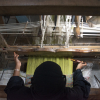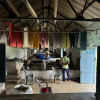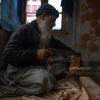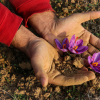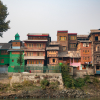Kashmir, nestled in the northernmost region of India, is renowned not only for stunning landscapes but also for its rich cultural heritage. From its architecture to folklore, handicrafts and cuisine, every facet of Kashmiri life is rooted in tradition. Among its various crafts, embroidery stands out as a centuries-old practice. The 2024 UNESCO designation of Srinagar as a ‘World Craft City’ has brought international recognition to the city’s longstanding tradition of handicrafts. Beyond this prestigious accolade lies the enduring legacy of artisans whose intricate handiwork continues to breathe life into the cultural fabric of Kashmir. This article explores three most iconic Kashmiri embroidery—aari, sozni and kashida—each representing the delicate interplay of tradition, skill and storytelling.
Aari
Aari work, locally known as zardozi, is one of the oldest forms of embroidery in the region, tracing its roots to the twelfth century, later flourishing under the Mughal patronage. This versatile embroidery style is not confined to a specific fabric—artisans craft their designs on cotton, wool, silk and linen, often used for household items such as curtains, bedsheets and cushion covers. Its delicate patterns feature floral motifs like the famous Chinar leaf, a symbol of Kashmiri identity, and animals inspired by the region’s natural landscapes.
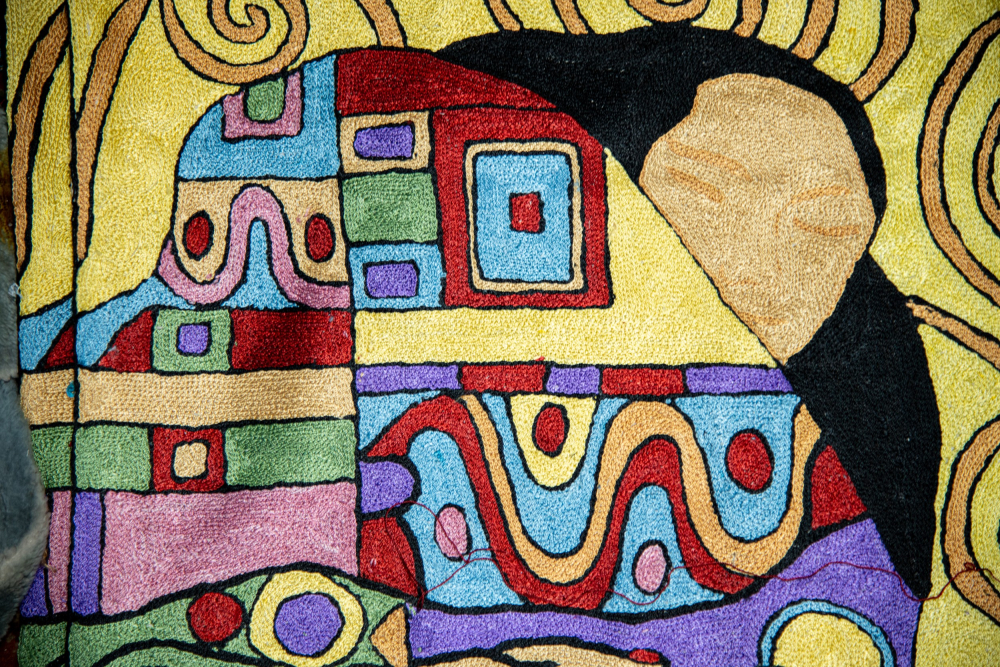
Artisan brings aari designs to life using a hooked needle. (Picture Credits: Syed Muneeb Masoodi)

Aari embroidery evolves with contemporary designs. (Picture Credits: Syed Muneeb Masoodi)
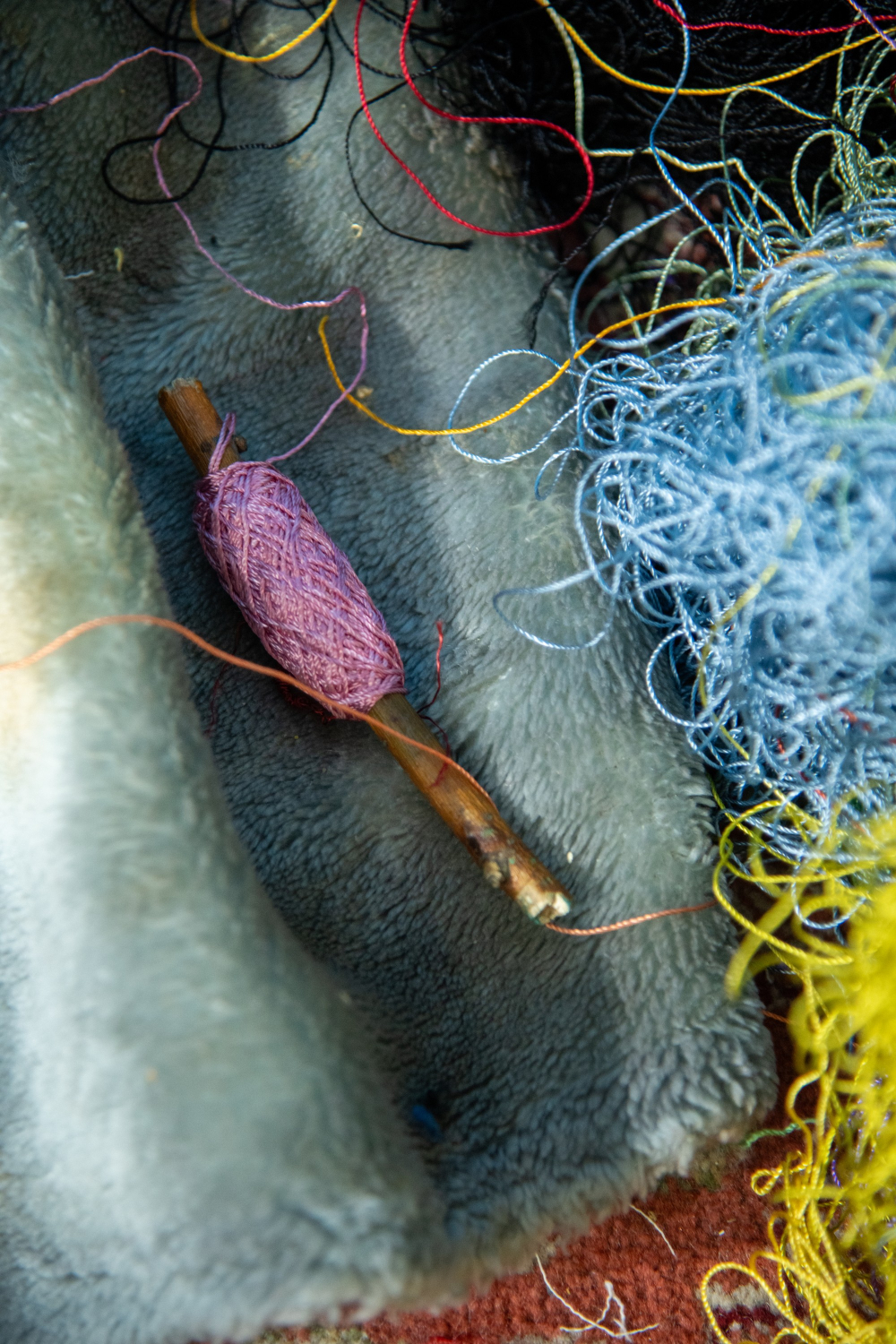
Threads are meticulously rolled and sorted, ready to be transformed into intricate aari embroidery. (Picture Credits: Syed Muneeb Masoodi)
The craft’s speciality lies in its labour-intensive process, where artisans use a pen-like needle to create elaborate designs, often taking weeks or months to complete a single piece. The intricacy of the work ensures that each item is unique, with no two designs ever being exactly the same. Despite the high level of skill involved, many artisans struggle to keep up with mass-produced, machine-made alternatives that have flooded the market. Faced with such a competitive modern market, these artisans end up selling their work at only a fraction of what they are worth. Even as their craft remains a source of pride and identity for the region, many artisans are on the verge of giving it up as a profession.
However, innovations are being made to keep this art form alive. Mir Abdul Majid, a master craftsman from Old City Srinagar, has introduced contemporary landscape designs into aari embroidery, earning him a state award from the Government of India. His fusion of traditional motifs with modern aesthetics has captured the interest of younger generations and art enthusiasts alike. Furthermore, various initiatives have been launched by NGOs and cooperatives working in the craft revival sector. One notable effort is the establishment of handicraft centres, such as Noor Aari in Srinagar, which employs over 600 artisans, most of them women. By collaborating with national brands like Fabindia and Rangsutra, these centres provide a sustainable source of income for the artisans, allowing them to continue practising their craft while reaching a broader customer base.
Sozni
Sozni, or sozan kaari, another celebrated form of Kashmiri embroidery with a history spanning over five centuries, originally adorned Kashmir’s famous pashmina shawls but has since expanded to garments like jackets, stoles and other accessories. Known for its meticulous needlework, sozni is characterised by its detailed floral, geometric and paisley patterns, each symbolising aspects of Kashmir’s natural beauty and cultural heritage.

A sozni artisan stitches delicate patterns inspired by Kashmir’s natural beauty onto fine Pashmina. (Picture Credits: Syed Muneeb Masoodi)
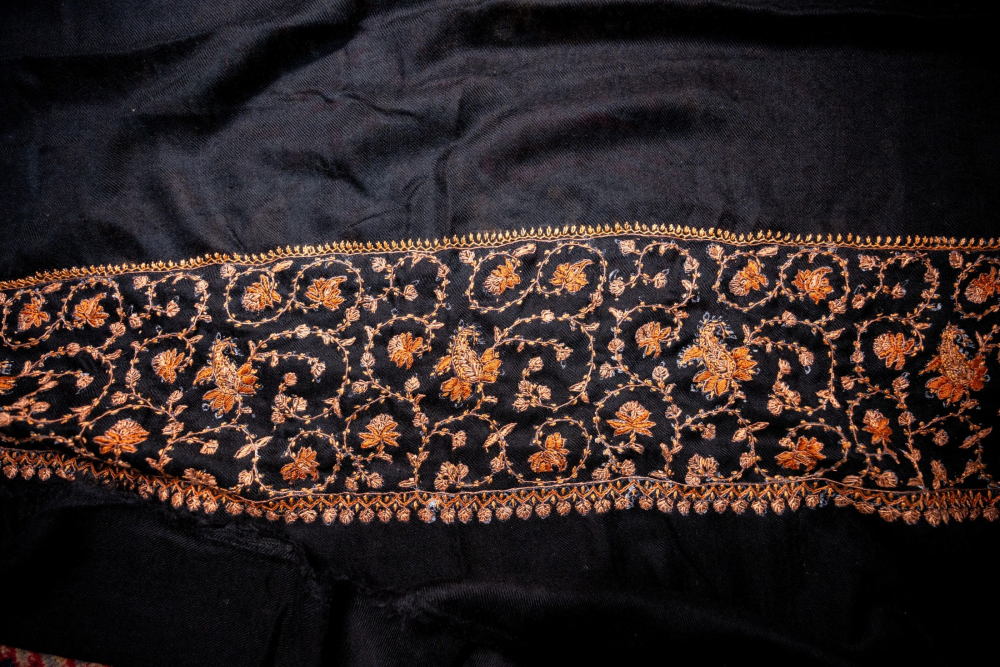
A pashmina shawl adorned with delicate sozni embroidery. (Picture Credits: Syed Muneeb Masoodi)
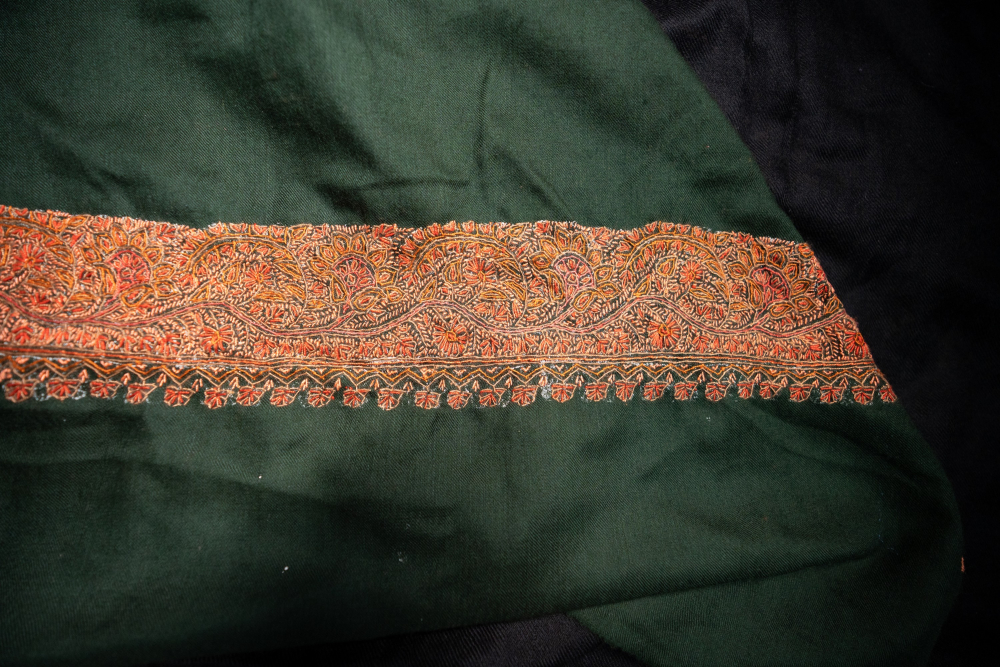
Inspired by nature, sozni embroidery transforms fine wool into a canvas of paisleys, florals, and Chinar leaves. (Picture Credits: Syed Muneeb Masoodi)
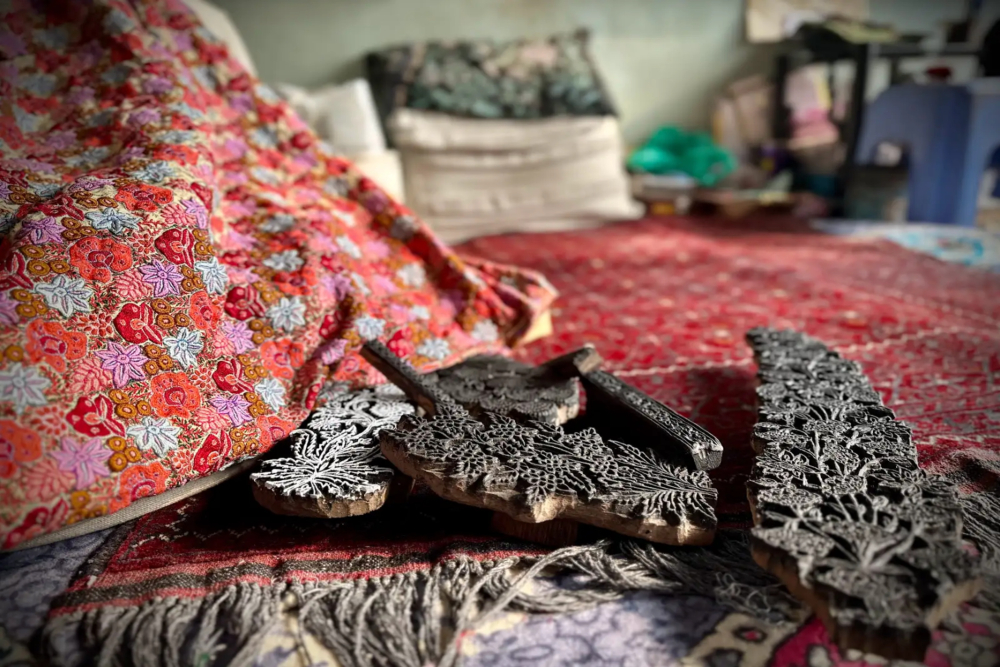
Wooden blocks to print designs before executing Sozni embroidery on a shawl. (Picture Credits: Taha Mughal)
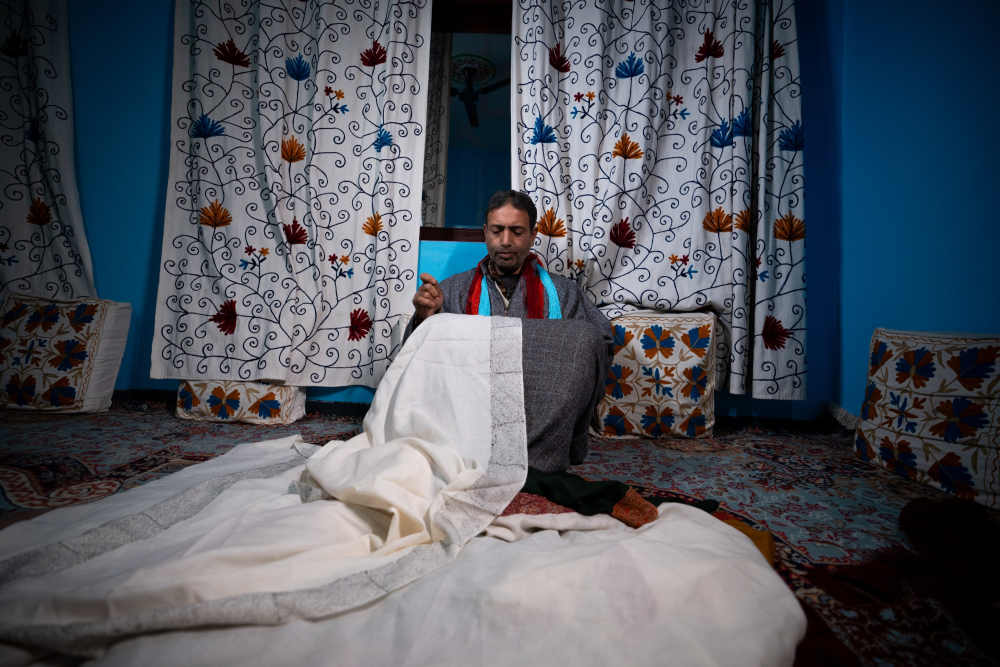
Sozni artisans carry forward a family legacy, mastering the craft for over four decades. (Picture Credits: Syed Muneeb Masoodi)

A meticulously crafted sozni shawl. (Picture Credits: Taha Mughal)
The creation process begins with senior artisans engraving the designs onto wooden blocks, which are then transferred to fabric using chalk or charcoal. Afterwards, the artisans meticulously weave the designs using fine needles and colourful threads. The needlework is so precise that the patterns appear identical on both sides of the fabric, a testament to the skill of the artisan. This painstaking process can take anywhere between a few days to several years, depending on the complexity of the design, making sozni pieces highly coveted and often quite expensive.
Artisans like Ghulam Mohammad Beigh and his brother Mehboob Ali Beigh have dedicated their lives to this art form, practising sozni embroidery for over four decades. They learned the craft from their grandparents, a legacy passed down their family line. Their efforts at preserving the craft have earned them recognition not just in India but around the world, with Ghulam Mohammad Beigh receiving numerous state awards for his contributions towards the craft’s international acclaim.
Yet, this art form faces many of the same challenges as the aari tradition—machine-made replicas have flooded the market, offering cheaper alternatives that undermine the value of handmade pieces. Although the government has introduced measures to support artisans, such as financial assistance schemes and cooperative programmes, many believe more needs to be done to protect the heritage and originality of sozni embroidery.
Kashida
Kashida embroidery is known for its vibrant, colourful patterns and thick, skilful stitching. This art form adorns materials like wool, cotton and silk, making it particularly popular for warm clothing and home decor items. Its designs celebrate nature through depictions of birds, flowers and leaves, all rendered in vivid hues that reflect the beauty of the Kashmir Valley.
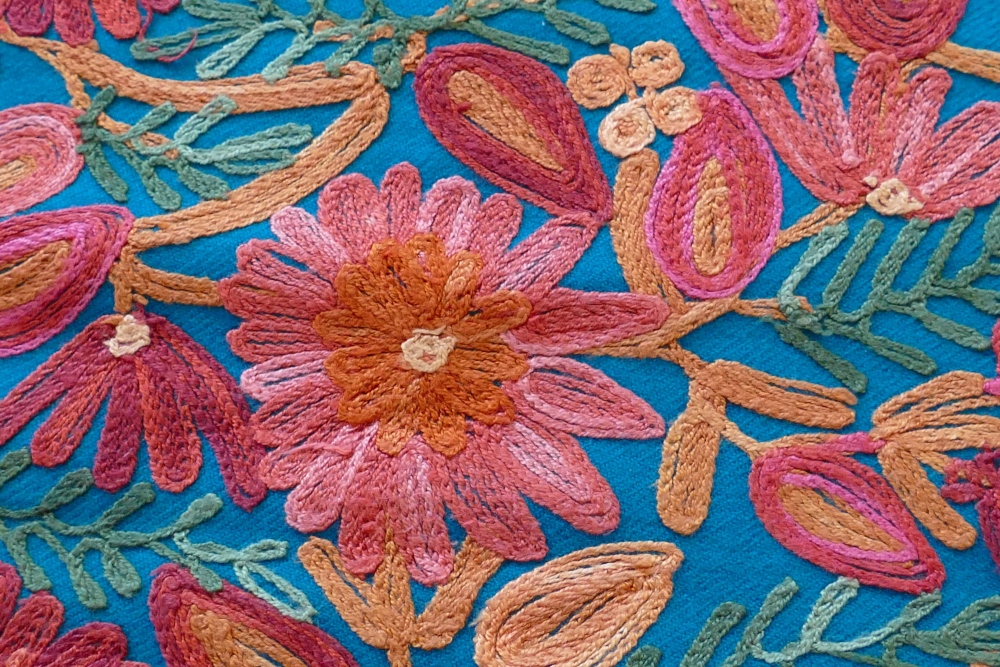
Kashida embroidery brings Kashmir’s landscapes to life with vibrant threads and bold, nature-inspired motifs. (Picture Credits: Wikimedia Commons)
One of the most distinctive features of kashida embroidery is its signature reversible designs. Artisans craft the embroidery in such a way that the patterns appear on both sides of the fabric, which doubles its value. Various terms are used to describe the different types of kashida embroidery, such as kashir jaal for embroidery limited to the sleeves and neckline of a garment, and jaama for designs that cover the entire fabric. This versatility has made kashida a beloved art form in Kashmir, one that continues to bring warmth and colour to homes and wardrobes alike.
Preservation Efforts and Government Initiatives
The Kashmiri government has taken steps to protect its traditional crafts in recognition of their importance not just as cultural artefacts but also as a source of livelihood for thousands of artisans. The Handicraft Department of the state government has pushed for Global Indication Tags for many crafts, ensuring that they are recognised for their authenticity. Several government schemes, such as the Artisan/Weavers Credit Scheme, the MUDRA Scheme, and educational benefits for artisans’ children, aim to provide financial support and resources to those in the handicrafts sector.
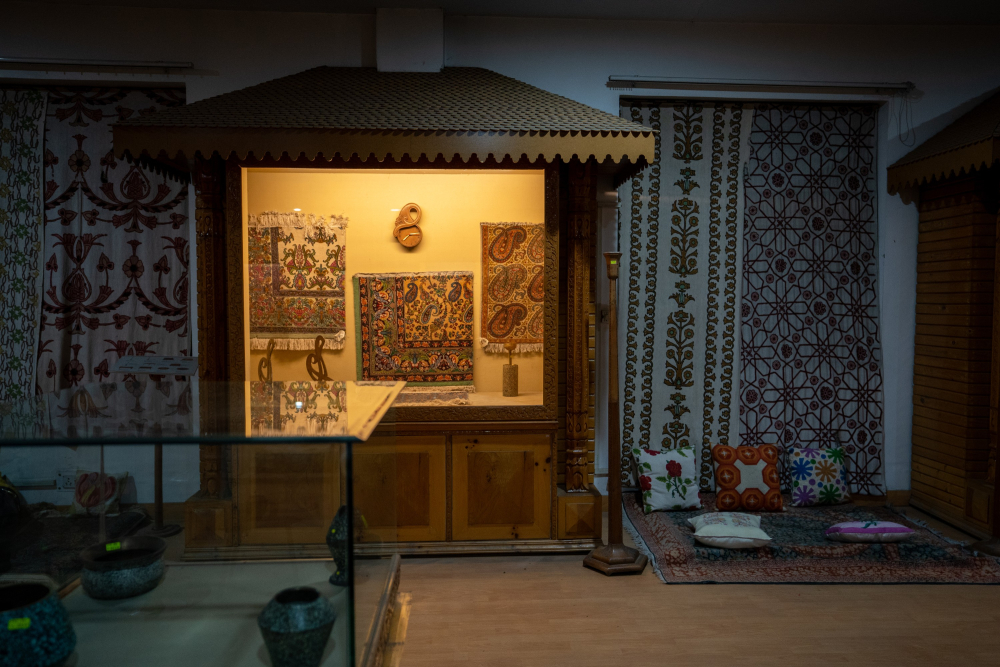
Celebrating Kashmir’s artistic legacy, the Craft Museum in Srinagar houses exquisite traditional craft artifacts. (Picture Credits: Syed Muneeb Masoodi)
In addition to government efforts, institutions like the Craft Museum in Srinagar play a crucial role in preserving and promoting Kashmiri crafts. The museum serves as a living archive, showcasing traditional art forms such as pashmina weaving, papier-mâché, woodcarving and kani shawls. Visitors can watch artisans at work, offering a rare glimpse into the techniques and skills that have been passed down through generations. The Craft Museum also organises events and workshops, connecting master artisans with younger generations who wish to learn these age-old skills. By partnering with schools and design institutes, the museum helps integrate traditional crafts into modern design, ensuring that these crafts remain relevant in contemporary markets while retaining their authenticity.
Kashmir’s rich tradition of embroidery forms an essential part of its cultural heritage. Each stitch tells a story of the region’s history, artistry and deep connection to nature. But it’s not just the responsibility of the government or institutions; consumers must also play their part by valuing and supporting authentic, handmade products.
This essay has been created as part of Sahapedia's My City My Heritage project, supported by the InterGlobe Foundation (IGF).



